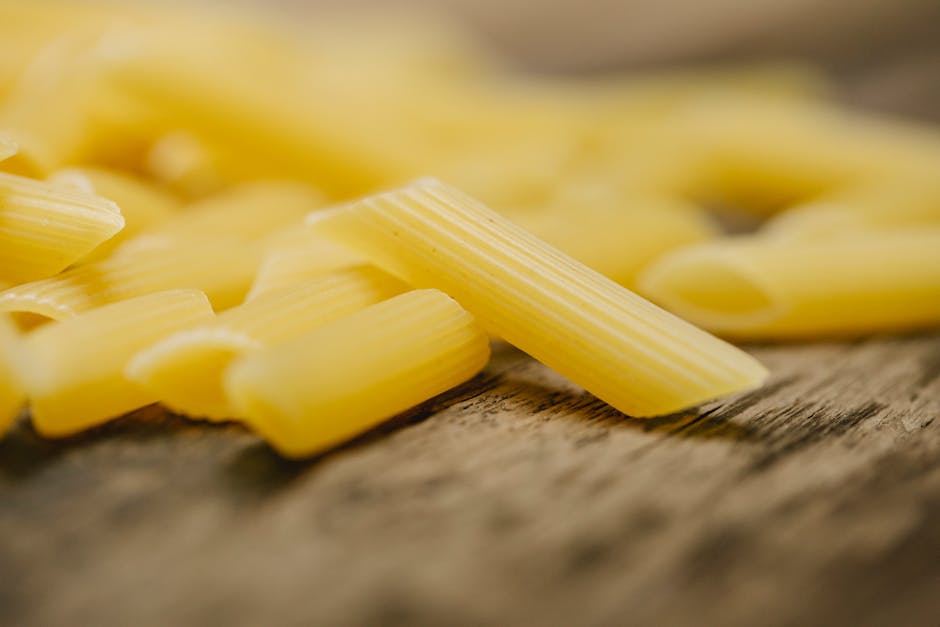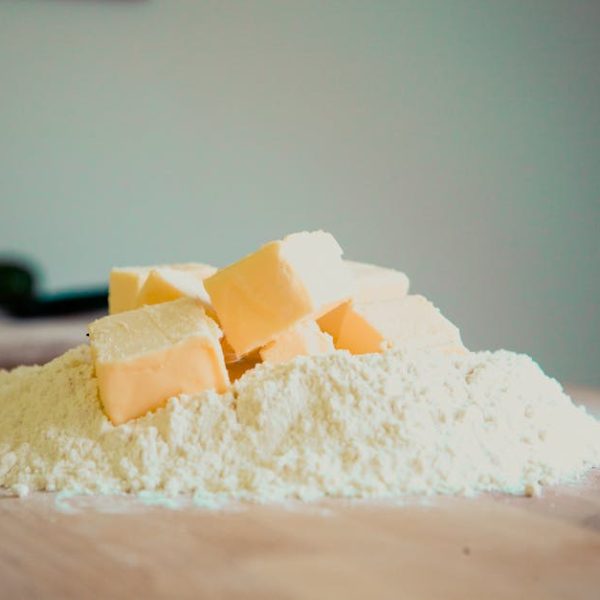The words Mac and Cheese immediately conjure up comforting images of rich, creamy cheese binding tender macaroni. Whether as a home comfort meal, gourmet delight, or sought-after freezer staple, mac and cheese holds a special place in millions of hearts (and stomachs). How long does this beloved food stay fresh, though? That’s something we’ll explore here, looking into the shelf life of different types of mac and cheese, from boxed to homemade, and everything in between.
Understanding Shelf-Life Metrics for Mac and Cheese
In the simplest terms, ‘shelf life’ refers to the period a food product remains safe to consume without any notable decline in its quality, taste, and nutritional value. For mac and cheese, shelf life can mean different things based on its type and storage conditions.
Factory-sealed boxed mac and cheese, for instance, has a shelf life typically set by the manufacturer. This is usually indicated by a ‘best by’ date on the package. An interesting point to note here is that the ‘best by’ date is just a guarantee of peak quality; most food products, mac and cheese included, can usually last beyond this date, especially when unopened.
Comparatively, opened or leftover mac and cheese has a significantly shorter freshness runway. Once cooked and exposed to the air, mac and cheese becomes susceptible to bacteria and mold, reducing its shelf-life drastically.
Shelf Life of Various Types of Mac and Cheese
Different types of mac and cheese have varying shelf lives. Here is an overview:
- Boxed Mac and Cheese: Unopened boxes generally remain fresh for 6-9 months past their ‘best by’ date, thanks to the vacuum-sealed packaging that shields the product from bacteria and pest contamination. Once prepared, however, it should be consumed within 2 days when stored correctly in the fridge.
- Gourmet Mac and Cheese: In upscale restaurant settings, gourmet versions utilize fresh ingredients including artisanal cheeses, cream, truffle oils, and such. These ingredients reduce its shelf-life to about 3-4 days in the refrigerator.
- Homemade Mac and Cheese: Similar to gourmet versions, homemade mac and cheese heavily depends on the freshness of ingredients. Typically, it can last for up to a week in the fridge if stored properly.
- Frozen Mac and Cheese: Store-bought frozen mac and cheese usually comes with a ‘use by’ date that suggests consumption within 1-2 months for optimal freshness.
Remember, these are just guidelines. The actual shelf-life can vary based on factors like the specific ingredients used, storage temperatures, and the general hygiene maintained during preparation and storage.
Proper Storage of Mac and Cheese to Extend Shelf Life
The key to extending the life of your mac and cheese lies in proper storage. Here are some best practices to ensure the maximum possible shelf-life:
Unopened Boxed Mac and Cheese: Store in a cool, dry place. Exposure to heat, humidity, or pests can negatively impact its longevity.
Cooked or Leftover Mac and Cheese: Always ensure that leftover mac and cheese is allowed to cool to room temperature before being refrigerated. Use airtight containers and consume within 2-3 days.
Freezing techniques: If you plan to store your mac and cheese for a more extended period, freezing is a great option. Freeze in an airtight container or aluminum pan covered tightly with foil. To use, thaw overnight in the fridge then reheat in the oven or stove.
However, it’s worth noting that while freezing extends the shelf life, the texture and flavor can somewhat alter, with pasta potentially becoming a bit more mushy after thawing.
These are the first steps in understanding the shelf-life of mac and cheese, and how to maintain its freshness! Stay tuned for more tips and signs to identify if your beloved dish has spoiled.
Signs That Your Mac and Cheese has Spoiled
Mac and cheese, like any food product, can spoil over time. It’s important, therefore, to identify the signs of spoilage before consuming it. Here’s a handy checklist to help guide you:
Changes in Appearance: If your mac and cheese start to form mold, it’s a clear indication that it has spoiled. Mold might appear as fuzzy spots in colors like white, green, blue, or even black.
Off-Putting Smell: Spoiled mac and cheese often develops a sour, off-putting smell. Trust your nose; if it smells off, refrain from eating it.
Altered Texture: Another sign is changes in texture. Mac and cheese should be creamy and moist. If it becomes hard, dry, or slimy, it’s time to toss it.
Unusual Taste: Lastly, if the flavor is different from when you originally cooked it, it’s likely that the mac and cheese has spoiled.
Pro tip: Always rely on visual and olfactory indicators before the taste test to ensure safety. It’s better to be safe than sorry.
Tips to Keep Mac and Cheese Fresh for Longer
Keeping your beloved mac and cheese fresh for a longer duration is not a Herculean task, especially if you follow these simple tips and tricks:
- Sealing leftovers effectively: Use airtight containers or cover your dish tightly with aluminum foil. This limits exposure to air and slows down the growth of bacteria and mold.
- Ideal temperature for storage: Refrigerate cooked mac and cheese promptly. Ideally, it should be stored below 40℉ (4℃) to slow bacterial growth.
- Using vacuum-sealed containers: These provide an extra layer of protection as they remove most of the air, further inhibiting bacterial growth.
Best practice: Cautions regarding the number of times mac and cheese can be re-heated. Each time you reheat food, its quality can degrade, and the risk for food poisoning increases if it’s not properly handled. Aim to reheat only the portion that you will consume at one time.
There you have it! A handy guide to understanding the shelf life, proper storage, and signs of spoilage in your favorite mac and cheese. Equipped with this knowledge, you can now safely enjoy this much-loved comfort food without worry. Bon appétit!
Key Takeaway:
- Shelf life of mac and cheese varies with its type (boxed, gourmet, homemade, frozen) and storage conditions.
- Proper storage methods such as refrigeration and freezing can significantly extend the shelf-life.
- Recognition of signs of spoilage in mac and cheese, such as changes in appearance, smell, texture, and taste is essential for maintaining food safety.
- Maintaining freshness involves proper sealing of leftovers, storing at the ideal temperature, and making use of vacuum-sealed containers.
As you savor your next serving of mac and cheese, remember the important role proper storage plays in keeping your food safe and tasty. Armed with this knowledge, you now possess the tools to enjoy this beloved dish with confidence. Bon appétit and remember, food enjoyed responsibly is a pleasure shared!
FAQs
Q: Can I extend the shelf life of mac and cheese by freezing it?
A: Yes, freezing mac and cheese can significantly extend its shelf life. Do remember that this might alter the texture of the pasta, making it a bit more mushy upon thawing and reheating.
Q: Does gourmet mac and cheese have a shorter shelf life than boxed ones?
A: Generally speaking, gourmet mac and cheese might have a shorter shelf life due to the use of fresh ingredients. However, proper storage can extend its freshness.
Q: How should I store leftover mac and cheese to maximize its shelf life?
A: Leftovers should be cooled to room temperature, stored in an airtight container, and refrigerated promptly. If possible, use a vacuum-sealed container for better preservation.
Q: Are there any visible signs to determine if my mac and cheese has spoiled?
A: Yes, visible signs of spoilage include changes in color, mold growth, a sour smell, altered texture, or an unusual taste.
Q: Does the ‘best by’ date on the mac and cheese box mean it’s unsafe to consume after that date?
A: Not necessarily. ‘Best by’ dates are about quality, not safety. An unopened boxed mac and cheese can typically last for several months past this date if stored appropriately.
Enjoyed this article? Share it with your friends and explore more interesting posts on our website.






